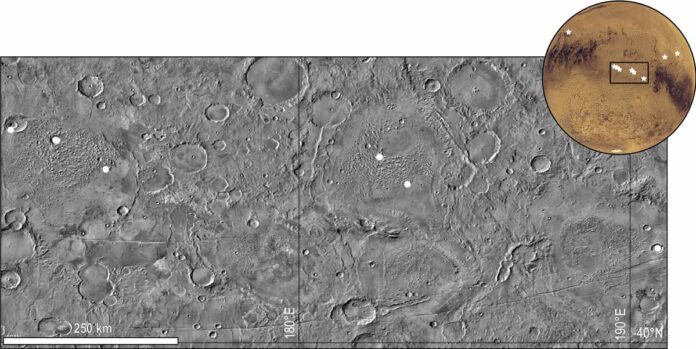Mars’ crust may be more complex and evolved than previously thought, according to researchers.
Mars’ early crust could have been similar to our planet’s original crust. Mars’ surface is basaltic as a result of billions of years of volcanism and flowing lava that eventually cooled. Scientists previously assumed that the history of Mars’ crust was simple because the planet did not experience large-scale surface shifts like Earth’s continents.
However, scientists have discovered that areas of Mars’ southern hemisphere have higher concentrations of silicon than would be expected in a purely basaltic environment. The presence of this chemical element was revealed by space rocks colliding with the planet.
How did the crust of Mars form?
“There is more silica in the composition that makes the rocks not basalt, but what we call more evolved in composition,” said Valerie Payré, Assistant Professor in the Department of Earth and Environmental Sciences at the University of Iowa and the study’s corresponding author.
“This demonstrates that the formation of the crust on Mars is far more complex than we previously thought.” So, it’s more about comprehending that process, particularly what it means for the formation of the Earth’s crust.”
Mars is thought to have formed around 4.5 billion years ago, but the exact process is unknown. There are, however, numerous theories on this.
According to one theory, Mars formed as a result of a collision of rocks in space, which resulted in the formation of a magma ocean due to intense heat. This magma ocean then gradually cooled, resulting in a predominantly basaltic surface on Mars.
Another theory proposed that the magma ocean was not all-encompassing, and that the origin of Mars’ first crust would highlight silica concentrations different from basaltic.
Silica concentration detection
The researchers examined data from the Mars Reconnaissance Orbiter for the planet’s southern hemisphere, which was previously thought to be the oldest region. Nine areas, such as craters and terrain fractures, were discovered to be rich in feldspar, a mineral associated with silicic lava flows rather than basaltic lava flows.
“This was the first hint,” Payré explained. “We investigated the silica concentrations there because the terrains are feldspar-rich.”
Although felspar had previously been discovered in other areas of Mars, further investigation revealed that the chemical composition in those areas was more basaltic. This did not deter the researchers, who instead used another instrument called THEMIS, which can detect silica concentrations via infrared wavelength reflections from Mars’ surface. Using this information, the team confirmed that the terrain at their chosen locations was silicic rather than basaltic.
Meteorites provide additional support for these observations
Meteorites are also lending credence to the team’s findings. Erg Check 002, a Sahara meteorite discovered around the birth of the solar system, has similar silicic and other mineral compositions to those found on Mars’ surface.
The crust was also dated to 4.2 billion years, making it the oldest crust discovered on Mars to date.
“There have been rovers on the surface that have observed rocks that were more silicic than basaltic,” Payré said of the discovery. As a result, there was speculation that the crust could be more silicic. But we never knew, and still don’t know, how the early crust formed or how old it is, so it’s still a mystery.”
Future applications for understanding Earth’s evolution
Although some insights into the origin of Mars’ surface have been gained, the history of Earth’s crust remains unknown, as our planet’s original crust shifted for billions of years. However, the findings may be able to shed light on Earth’s origins in the future.
“We don’t know the origins of our planet’s crust; we don’t even know when life first appeared,” Payré explained. “Many people believe the two are related.” Understanding what the crust was like a long time ago could help us understand our planet’s entire evolution.”
The Mars Science Laboratory Participating Scientist Program and the Mars Odyssey THEMIS project were both funded by NASA.

